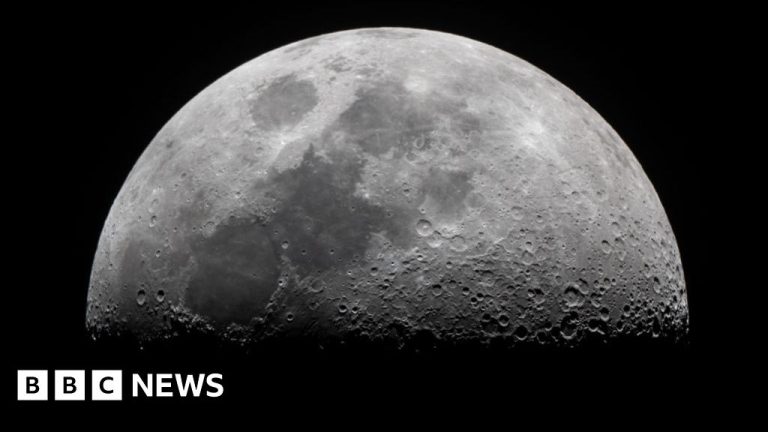Volcanoes erupted on the mysterious far side of the Moon billions of years ago, American and Chinese researchers have discovered.
The analysis of samples collected by a Chinese mission made it possible to find fragments of basalt (volcanic rock formed after an eruption) dating back more than 4.2 billion years.
The results were published Friday in the journals Nature and Science.
While scientists already knew of volcanic activity on the near side of the Moon, visible from Earth, the “far side” is very different in its geology and remains largely unexplored.
The rock and dust samples – the first to be recovered from the far side of the Moon – were collected by the Chang'e-6 spacecraft, following a nearly two-month mission full of risks.
Led by experts from the Chinese Academy of Sciences, the researchers used radiometric dating to determine the age of the volcanic rock.
Their analysis also revealed that a “surprisingly young” flare occurred about 2.83 billion years ago, something that has not been found on the near side of the Moon.
“This is an incredibly exciting study,” wrote Professor Qiuli Li of the Institute of Geology and Geophysics in a detailed peer review.
“This is the first geochronological study carried out using the Chang'e-6 samples and will be of immense importance to the lunar and planetary scientific community.”
Although it's widely known as the “dark side,” this part of the Moon actually receives a lot of sunlight – we just don't see it.
This is because the Moon is tidally locked to Earth and takes the same amount of time to orbit our planet – around 27 days – meaning the same side always faces us.
The first image of the far side was captured in 1959 by the Soviet Luna 3 spacecraft. They were grainy, but gave Earthlings a glimpse of the Moon from a different angle.
Since then, several better quality images have been returned, including an extraordinary NASA video showing the Moon seen from the far side, with Earth in the background.
And earlier this year, during the Chang'e-6 mission, a small roving vehicle was deployed to take a selfie of the lander resting on the rocky surface on the other side.

